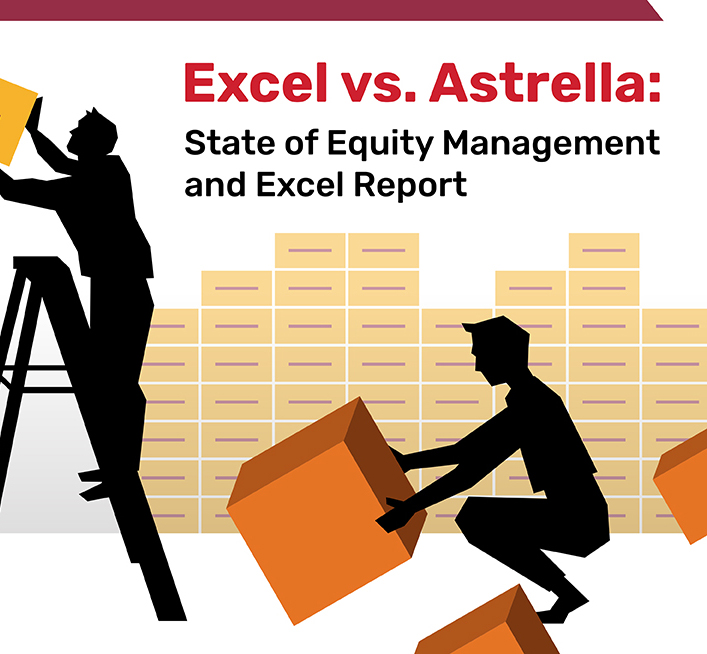Equity management is a critical component of financial compliance for firms in the financial industry. Audits of equity management practices are essential for ensuring adherence to regulations and maintaining the integrity of financial records. This article provides a comprehensive guide to preparing for equity management audits, including an overview of the regulatory landscape, common audit findings, and essential documents required for a successful audit. By understanding the key aspects of equity management audits, firms can minimize the risk of penalties or reputational damage and ensure the accuracy and transparency of their financial operations.
Equity Management Audits
In financial institutions, equity management audits serve as essential tools for risk management and regulatory compliance. These comprehensive evaluations delve into the intricacies of a firm’s management practices, ensuring adherence to relevant regulations and safeguarding the institution’s financial health.
Through meticulous reviews, auditors cast a discerning eye over a firm’s equity trading activities, examining every facet from the execution and settlement of trades to the effectiveness of risk management processes and internal controls. This comprehensive approach leaves no stone unturned, identifying areas of strength and potential vulnerabilities within the firm’s equity management framework.
The scope of an equity management audit is not a one-size-fits-all endeavor. It adapts to each firm’s unique characteristics, considering factors such as size, complexity, and industry-specific nuances. This tailored approach ensures that the audit addresses the specific risks and challenges faced by the institution, providing a comprehensive assessment of its equity management practices.
To navigate the audit process with confidence, firms should invest in building a robust equity management framework. This framework serves as the foundation for effectively managing risks associated with equity trading activities. By implementing comprehensive policies and procedures, coupled with robust systems and controls, firms can safeguard the integrity of financial records and ensure compliance with regulatory requirements.
Proactive preparation is key to a successful equity management audit. Firms that diligently address potential vulnerabilities and maintain accurate documentation are well-positioned to demonstrate their commitment to sound risk management practices. This not only enhances their readiness for audits but also minimizes the likelihood of adverse findings that could tarnish their reputation and hinder their ability to thrive in the competitive financial landscape.
What Types of Audits Might You Expect for Equity?
This section provides an overview of the diverse types of equity audits that firms may be subject to, including SEC, FINRA, internal, exchange, and OTC regulatory audits.
- The Securities and Exchange Commission (SEC) is the primary regulator of the securities industry in the United States. SEC audits are comprehensive examinations of a firm’s equity management practices, focusing on compliance with federal securities laws and regulations. These audits are designed to ensure that firms are operating in a fair and transparent manner, protecting the interests of investors.
- The Financial Industry Regulatory Authority (FINRA) is a self-regulatory organization (SRO) that oversees the activities of broker-dealers in the United States. FINRA audits are typically less comprehensive than SEC audits, but they can still be significant undertakings. FINRA audits focus on compliance with FINRA rules and regulations, which are designed to protect investors and promote market integrity.
- Internal audits are conducted by a firm’s own internal audit department. These audits are typically less formal than SEC or FINRA audits, but they can still be important for identifying and addressing risks in a firm’s equity management practices. Internal audits can also help firms prepare for external audits.
- Exchange audits are conducted by the exchanges on which a firm’s securities are listed. These audits focus on compliance with the exchange’s listing requirements, which are designed to ensure that listed companies meet certain standards of financial reporting and corporate governance.
- OTC regulatory audits are conducted by the OTC Markets Group, which is a self-regulatory organization that oversees the trading of over-the-counter (OTC) securities. OTC regulatory audits focus on compliance with OTC Markets Group rules and regulations, which are designed to protect investors and promote market integrity.
By understanding the diverse types of equity audits that firms may be subject to, these firms can better prepare for these audits and minimize the risk of adverse findings.
The Regulatory Landscape
The regulatory landscape for equity management is complex and ever-changing. As a result, firms must stay up-to-date on the latest rules and regulations to ensure compliance. The primary regulatory bodies that oversee the equity management industry include the Securities and Exchange Commission (SEC), the Financial Industry Regulatory Authority (FINRA), and the exchanges on which a firm’s securities are listed.
The SEC is the primary regulator of the securities industry in the United States. The SEC’s rules and regulations are designed to protect investors and ensure the integrity of the securities markets. Some of the key SEC rules and regulations that govern equity management include the Securities Act of 1933, the Securities Exchange Act of 1934, and the Investment Company Act of 1940.
FINRA is a self-regulatory organization (SRO) that oversees the activities of broker-dealers in the United States. FINRA’s rules and regulations are designed to protect investors and promote market integrity. Some of the key FINRA rules and regulations that govern equity management include the FINRA Rulebook, the FINRA Code of Arbitration, and the FINRA By-Laws.
The exchanges on which a firm’s securities are listed also have rules and regulations that govern equity management. These rules and regulations are designed to ensure that listed companies meet certain standards of financial reporting and corporate governance. Some of the key exchange rules and regulations that govern equity management include the New York Stock Exchange (NYSE) Listed Company Manual, the Nasdaq Stock Market (Nasdaq) Listing Rules, and the American Stock Exchange (AMEX) Listing Standards.
The consequences of non-compliance with equity management rules and regulations can be significant. Firms that fail to comply with the rules and regulations may be subject to civil penalties, fines, and even criminal prosecution. In addition, firms that fail to comply with the rules and regulations may also damage their reputation and lose the trust of their investors.
Common Audit Findings
During equity management audits, regulators and auditors scrutinize various aspects of a firm’s equity management practices to ensure compliance with regulations and standards. Some common audit findings that firms should be aware of include:
- Inadequate Documentation: Auditors often find instances of insufficient or poorly maintained documentation related to equity transactions. This can include missing or incomplete records of trades, inadequate authorization and approval processes, and a lack of supporting documentation for equity-related decisions. Proper documentation serves as an audit trail and helps firms demonstrate compliance with regulatory requirements.
- Inaccurate or Incomplete Records: Inaccurate or incomplete records of equity ownership can also be a common audit finding. This can arise from errors in recording share issuances, transfers, or repurchases, or outdated or incorrect shareholder information. Accurate and up-to-date records are crucial for maintaining transparency and ensuring the rights of shareholders.
- Non-Compliance with Reporting and Disclosure Requirements: Failure to comply with regulatory requirements for equity reporting and disclosure is another frequent audit finding. This may include missing or delayed filings of equity-related reports, inadequate disclosures in financial statements, or failure to provide timely information to shareholders. Compliance with reporting and disclosure requirements is essential for ensuring transparency and protecting the interests of investors.
- Internal Control Weaknesses: Auditors may identify weaknesses in a firm’s internal controls over equity management. This can include inadequate segregation of duties, lack of proper authorization and approval processes, or insufficient monitoring and review mechanisms. Strong internal controls are vital for safeguarding assets, preventing fraud, and ensuring the reliability of financial information.
These common audit findings highlight areas where firms need to exercise vigilance and ensure strict adherence to regulations and best practices. By addressing these issues proactively, firms can mitigate the risk of audit deficiencies and maintain the integrity of their equity management practices.
Preparing For an Audit
To ensure a smooth and successful audit, firms should undertake thorough preparation. This involves conducting a comprehensive review of their equity management policies and procedures to identify any gaps or areas of non-compliance. All equity transactions must be properly documented and accounted for, with accurate and complete records maintained. Firms should also establish a robust system for monitoring their accounts for any unusual activity that could indicate potential irregularities. An equity management software can be very helpful to achieve this.
A crucial aspect of audit preparation is developing a system for tracking and responding to regulatory inquiries. This includes designating a contact within the firm responsible for handling all regulatory inquiries and ensuring prompt and accurate responses. Additionally, firms should develop a comprehensive plan for communicating with regulators, outlining the process for providing information and responding to requests. By being well-prepared and organized, firms can effectively navigate the audit process, minimize the risk of adverse findings, and maintain their reputation as responsible and compliant entities.
Best Practices for Equity Management
To ensure effective equity management and reduce the risk of audit findings, firms should adopt and adhere to a set of best practices. These practices include:
- Maintaining accurate and up-to-date records of all equity transactions. This includes records of all equity issuances, repurchases, transfers, and cancellations. These records should be kept in a secure and easily accessible location.
- Establishing and enforcing internal controls over equity management. This includes controls over the authorization, recording, and reporting of equity transactions. Internal controls should also be in place to ensure that equity transactions are processed in accordance with applicable regulations and standards.
- Regularly reviewing and updating equity management policies and procedures. Equity management policies and procedures should be reviewed and updated regularly to ensure that they are current with applicable regulations and standards. They should also be communicating with all relevant personnel within the firm.
- Conducting internal audits or reviews of equity management practices. Internal audits or reviews of equity management practices can help firms to identify any weaknesses in their equity management systems and processes. These audits or reviews should be conducted by qualified personnel and should be documented.
By following these best practices, firms can help to ensure the integrity of their financial records and reduce the risk of audit findings. Additionally, these practices can help firms to improve their overall equity management practices and processes.
Conclusion
In conclusion, equity management audits play a pivotal role in ensuring regulatory compliance and preserving the integrity of a firm’s financial records. To navigate these audits successfully, thorough preparation is essential. This entails meticulously reviewing equity management policies and procedures, meticulously documenting and accounting for all equity transactions, and implementing a robust system to monitor accounts for any irregularities. Furthermore, developing a system for managing regulatory inquiries and establishing a comprehensive communication plan with regulators are crucial steps.
By assembling the necessary documents, including offering documents, capital account statements, distribution records, tax returns, and meeting minutes, firms can streamline the audit process and minimize potential delays. Adhering to best practices, such as maintaining accurate records, implementing internal controls, regularly updating policies and procedures, and conducting internal reviews, can significantly reduce the risk of audit findings and enhance overall equity management effectiveness.
Ultimately, success in equity management audits lies in proactive preparation and a commitment to transparency. Embracing these principles allows firms to demonstrate their dedication to regulatory compliance, fostering trust among investors and stakeholders. By diligently following these guidelines, firms can confidently navigate equity management audits, ensuring the integrity of their financial records and maintaining their reputation as responsible and ethical entities.

Tom Kirby
Tom Kirby serves as the Head of Global Sales at Astrella. With more than 20 years of experience in sales and business development, he is dedicated to fostering strong client relationships and assisting both private and public companies in understanding and effectively communicating their value.
































































































































